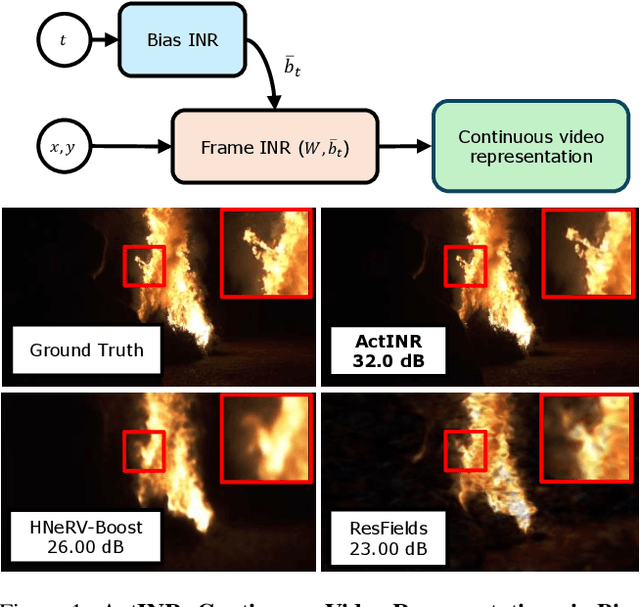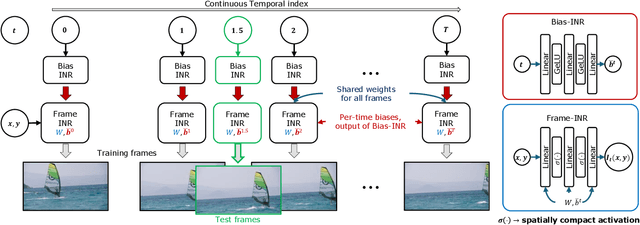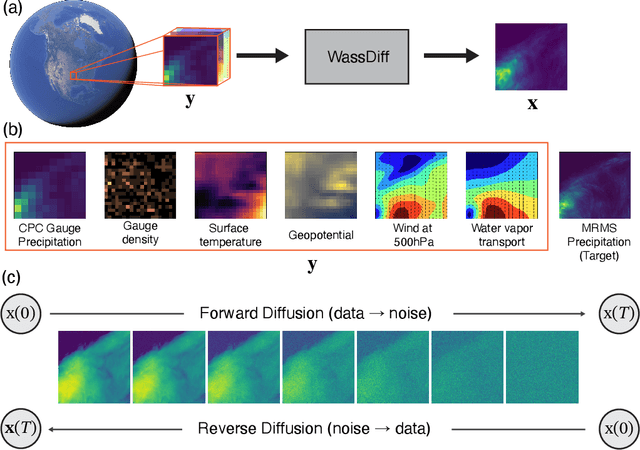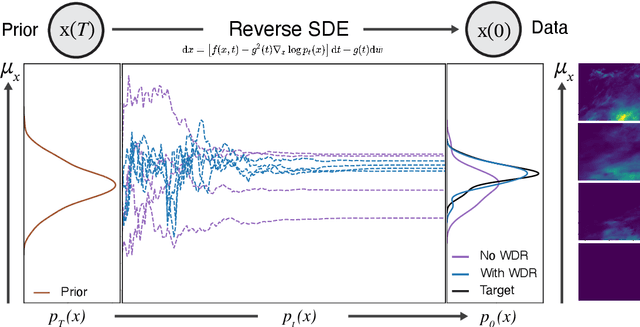Guha Balakrishnan
COMPASS: Robust Feature Conformal Prediction for Medical Segmentation Metrics
Sep 26, 2025Abstract:In clinical applications, the utility of segmentation models is often based on the accuracy of derived downstream metrics such as organ size, rather than by the pixel-level accuracy of the segmentation masks themselves. Thus, uncertainty quantification for such metrics is crucial for decision-making. Conformal prediction (CP) is a popular framework to derive such principled uncertainty guarantees, but applying CP naively to the final scalar metric is inefficient because it treats the complex, non-linear segmentation-to-metric pipeline as a black box. We introduce COMPASS, a practical framework that generates efficient, metric-based CP intervals for image segmentation models by leveraging the inductive biases of their underlying deep neural networks. COMPASS performs calibration directly in the model's representation space by perturbing intermediate features along low-dimensional subspaces maximally sensitive to the target metric. We prove that COMPASS achieves valid marginal coverage under exchangeability and nestedness assumptions. Empirically, we demonstrate that COMPASS produces significantly tighter intervals than traditional CP baselines on four medical image segmentation tasks for area estimation of skin lesions and anatomical structures. Furthermore, we show that leveraging learned internal features to estimate importance weights allows COMPASS to also recover target coverage under covariate shifts. COMPASS paves the way for practical, metric-based uncertainty quantification for medical image segmentation.
GIQ: Benchmarking 3D Geometric Reasoning of Vision Foundation Models with Simulated and Real Polyhedra
Jun 11, 2025Abstract:Monocular 3D reconstruction methods and vision-language models (VLMs) demonstrate impressive results on standard benchmarks, yet their true understanding of geometric properties remains unclear. We introduce GIQ , a comprehensive benchmark specifically designed to evaluate the geometric reasoning capabilities of vision and vision-language foundation models. GIQ comprises synthetic and real-world images of 224 diverse polyhedra - including Platonic, Archimedean, Johnson, and Catalan solids, as well as stellations and compound shapes - covering varying levels of complexity and symmetry. Through systematic experiments involving monocular 3D reconstruction, 3D symmetry detection, mental rotation tests, and zero-shot shape classification tasks, we reveal significant shortcomings in current models. State-of-the-art reconstruction algorithms trained on extensive 3D datasets struggle to reconstruct even basic geometric forms accurately. While foundation models effectively detect specific 3D symmetry elements via linear probing, they falter significantly in tasks requiring detailed geometric differentiation, such as mental rotation. Moreover, advanced vision-language assistants exhibit remarkably low accuracy on complex polyhedra, systematically misinterpreting basic properties like face geometry, convexity, and compound structures. GIQ is publicly available, providing a structured platform to highlight and address critical gaps in geometric intelligence, facilitating future progress in robust, geometry-aware representation learning.
Post-Hurricane Debris Segmentation Using Fine-Tuned Foundational Vision Models
Apr 19, 2025Abstract:Timely and accurate detection of hurricane debris is critical for effective disaster response and community resilience. While post-disaster aerial imagery is readily available, robust debris segmentation solutions applicable across multiple disaster regions remain limited. Developing a generalized solution is challenging due to varying environmental and imaging conditions that alter debris' visual signatures across different regions, further compounded by the scarcity of training data. This study addresses these challenges by fine-tuning pre-trained foundational vision models, achieving robust performance with a relatively small, high-quality dataset. Specifically, this work introduces an open-source dataset comprising approximately 1,200 manually annotated aerial RGB images from Hurricanes Ian, Ida, and Ike. To mitigate human biases and enhance data quality, labels from multiple annotators are strategically aggregated and visual prompt engineering is employed. The resulting fine-tuned model, named fCLIPSeg, achieves a Dice score of 0.70 on data from Hurricane Ida -- a disaster event entirely excluded during training -- with virtually no false positives in debris-free areas. This work presents the first event-agnostic debris segmentation model requiring only standard RGB imagery during deployment, making it well-suited for rapid, large-scale post-disaster impact assessments and recovery planning.
TranSplat: Lighting-Consistent Cross-Scene Object Transfer with 3D Gaussian Splatting
Mar 28, 2025Abstract:We present TranSplat, a 3D scene rendering algorithm that enables realistic cross-scene object transfer (from a source to a target scene) based on the Gaussian Splatting framework. Our approach addresses two critical challenges: (1) precise 3D object extraction from the source scene, and (2) faithful relighting of the transferred object in the target scene without explicit material property estimation. TranSplat fits a splatting model to the source scene, using 2D object masks to drive fine-grained 3D segmentation. Following user-guided insertion of the object into the target scene, along with automatic refinement of position and orientation, TranSplat derives per-Gaussian radiance transfer functions via spherical harmonic analysis to adapt the object's appearance to match the target scene's lighting environment. This relighting strategy does not require explicitly estimating physical scene properties such as BRDFs. Evaluated on several synthetic and real-world scenes and objects, TranSplat yields excellent 3D object extractions and relighting performance compared to recent baseline methods and visually convincing cross-scene object transfers. We conclude by discussing the limitations of the approach.
When are Diffusion Priors Helpful in Sparse Reconstruction? A Study with Sparse-view CT
Feb 04, 2025Abstract:Diffusion models demonstrate state-of-the-art performance on image generation, and are gaining traction for sparse medical image reconstruction tasks. However, compared to classical reconstruction algorithms relying on simple analytical priors, diffusion models have the dangerous property of producing realistic looking results \emph{even when incorrect}, particularly with few observations. We investigate the utility of diffusion models as priors for image reconstruction by varying the number of observations and comparing their performance to classical priors (sparse and Tikhonov regularization) using pixel-based, structural, and downstream metrics. We make comparisons on low-dose chest wall computed tomography (CT) for fat mass quantification. First, we find that classical priors are superior to diffusion priors when the number of projections is ``sufficient''. Second, we find that diffusion priors can capture a large amount of detail with very few observations, significantly outperforming classical priors. However, they fall short of capturing all details, even with many observations. Finally, we find that the performance of diffusion priors plateau after extremely few ($\approx$10-15) projections. Ultimately, our work highlights potential issues with diffusion-based sparse reconstruction and underscores the importance of further investigation, particularly in high-stakes clinical settings.
Bias for Action: Video Implicit Neural Representations with Bias Modulation
Jan 16, 2025



Abstract:We propose a new continuous video modeling framework based on implicit neural representations (INRs) called ActINR. At the core of our approach is the observation that INRs can be considered as a learnable dictionary, with the shapes of the basis functions governed by the weights of the INR, and their locations governed by the biases. Given compact non-linear activation functions, we hypothesize that an INR's biases are suitable to capture motion across images, and facilitate compact representations for video sequences. Using these observations, we design ActINR to share INR weights across frames of a video sequence, while using unique biases for each frame. We further model the biases as the output of a separate INR conditioned on time index to promote smoothness. By training the video INR and this bias INR together, we demonstrate unique capabilities, including $10\times$ video slow motion, $4\times$ spatial super resolution along with $2\times$ slow motion, denoising, and video inpainting. ActINR performs remarkably well across numerous video processing tasks (often achieving more than 6dB improvement), setting a new standard for continuous modeling of videos.
Not all Views are Created Equal: Analyzing Viewpoint Instabilities in Vision Foundation Models
Dec 27, 2024



Abstract:In this paper, we analyze the viewpoint stability of foundational models - specifically, their sensitivity to changes in viewpoint- and define instability as significant feature variations resulting from minor changes in viewing angle, leading to generalization gaps in 3D reasoning tasks. We investigate nine foundational models, focusing on their responses to viewpoint changes, including the often-overlooked accidental viewpoints where specific camera orientations obscure an object's true 3D structure. Our methodology enables recognizing and classifying out-of-distribution (OOD), accidental, and stable viewpoints using feature representations alone, without accessing the actual images. Our findings indicate that while foundation models consistently encode accidental viewpoints, they vary in their interpretation of OOD viewpoints due to inherent biases, at times leading to object misclassifications based on geometric resemblance. Through quantitative and qualitative evaluations on three downstream tasks - classification, VQA, and 3D reconstruction - we illustrate the impact of viewpoint instability and underscore the importance of feature robustness across diverse viewing conditions.
Regression Conformal Prediction under Bias
Oct 07, 2024



Abstract:Uncertainty quantification is crucial to account for the imperfect predictions of machine learning algorithms for high-impact applications. Conformal prediction (CP) is a powerful framework for uncertainty quantification that generates calibrated prediction intervals with valid coverage. In this work, we study how CP intervals are affected by bias - the systematic deviation of a prediction from ground truth values - a phenomenon prevalent in many real-world applications. We investigate the influence of bias on interval lengths of two different types of adjustments -- symmetric adjustments, the conventional method where both sides of the interval are adjusted equally, and asymmetric adjustments, a more flexible method where the interval can be adjusted unequally in positive or negative directions. We present theoretical and empirical analyses characterizing how symmetric and asymmetric adjustments impact the "tightness" of CP intervals for regression tasks. Specifically for absolute residual and quantile-based non-conformity scores, we prove: 1) the upper bound of symmetrically adjusted interval lengths increases by $2|b|$ where $b$ is a globally applied scalar value representing bias, 2) asymmetrically adjusted interval lengths are not affected by bias, and 3) conditions when asymmetrically adjusted interval lengths are guaranteed to be smaller than symmetric ones. Our analyses suggest that even if predictions exhibit significant drift from ground truth values, asymmetrically adjusted intervals are still able to maintain the same tightness and validity of intervals as if the drift had never happened, while symmetric ones significantly inflate the lengths. We demonstrate our theoretical results with two real-world prediction tasks: sparse-view computed tomography (CT) reconstruction and time-series weather forecasting. Our work paves the way for more bias-robust machine learning systems.
Generative Precipitation Downscaling using Score-based Diffusion with Wasserstein Regularization
Oct 01, 2024



Abstract:Understanding local risks from extreme rainfall, such as flooding, requires both long records (to sample rare events) and high-resolution products (to assess localized hazards). Unfortunately, there is a dearth of long-record and high-resolution products that can be used to understand local risk and precipitation science. In this paper, we present a novel generative diffusion model that downscales (super-resolves) globally available Climate Prediction Center (CPC) gauge-based precipitation products and ERA5 reanalysis data to generate kilometer-scale precipitation estimates. Downscaling gauge-based precipitation from 55 km to 1 km while recovering extreme rainfall signals poses significant challenges. To enforce our model (named WassDiff) to produce well-calibrated precipitation intensity values, we introduce a Wasserstein Distance Regularization (WDR) term for the score-matching training objective in the diffusion denoising process. We show that WDR greatly enhances the model's ability to capture extreme values compared to diffusion without WDR. Extensive evaluation shows that WassDiff has better reconstruction accuracy and bias scores than conventional score-based diffusion models. Case studies of extreme weather phenomena, like tropical storms and cold fronts, demonstrate WassDiff's ability to produce appropriate spatial patterns while capturing extremes. Such downscaling capability enables the generation of extensive km-scale precipitation datasets from existing historical global gauge records and current gauge measurements in areas without high-resolution radar.
Learning Transferable Features for Implicit Neural Representations
Sep 15, 2024Abstract:Implicit neural representations (INRs) have demonstrated success in a variety of applications, including inverse problems and neural rendering. An INR is typically trained to capture one signal of interest, resulting in learned neural features that are highly attuned to that signal. Assumed to be less generalizable, we explore the aspect of transferability of such learned neural features for fitting similar signals. We introduce a new INR training framework, STRAINER that learns transferrable features for fitting INRs to new signals from a given distribution, faster and with better reconstruction quality. Owing to the sequential layer-wise affine operations in an INR, we propose to learn transferable representations by sharing initial encoder layers across multiple INRs with independent decoder layers. At test time, the learned encoder representations are transferred as initialization for an otherwise randomly initialized INR. We find STRAINER to yield extremely powerful initialization for fitting images from the same domain and allow for $\approx +10dB$ gain in signal quality early on compared to an untrained INR itself. STRAINER also provides a simple way to encode data-driven priors in INRs. We evaluate STRAINER on multiple in-domain and out-of-domain signal fitting tasks and inverse problems and further provide detailed analysis and discussion on the transferability of STRAINER's features. Our demo can be accessed at https://colab.research.google.com/drive/1fBZAwqE8C_lrRPAe-hQZJTWrMJuAKtG2?usp=sharing .
 Add to Chrome
Add to Chrome Add to Firefox
Add to Firefox Add to Edge
Add to Edge